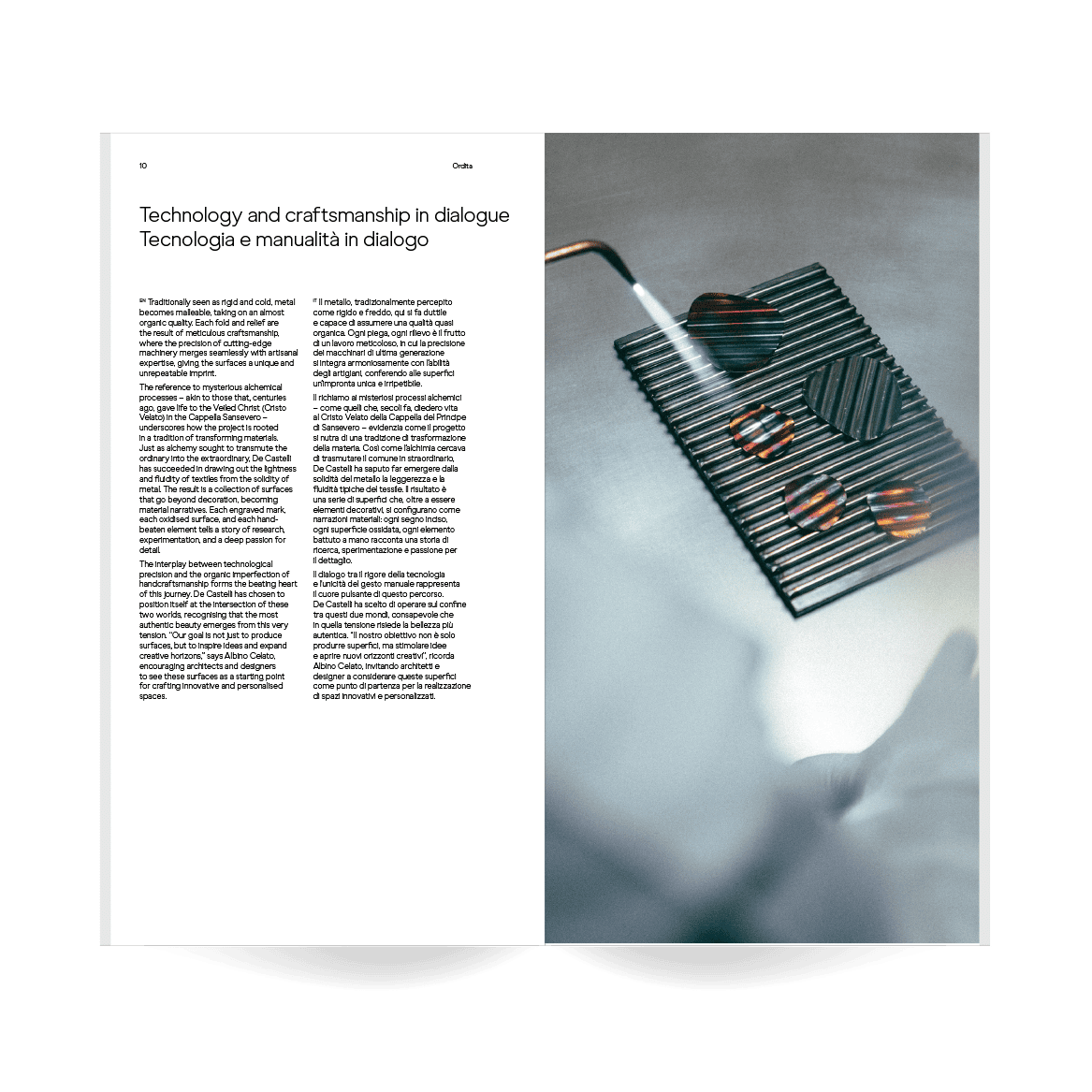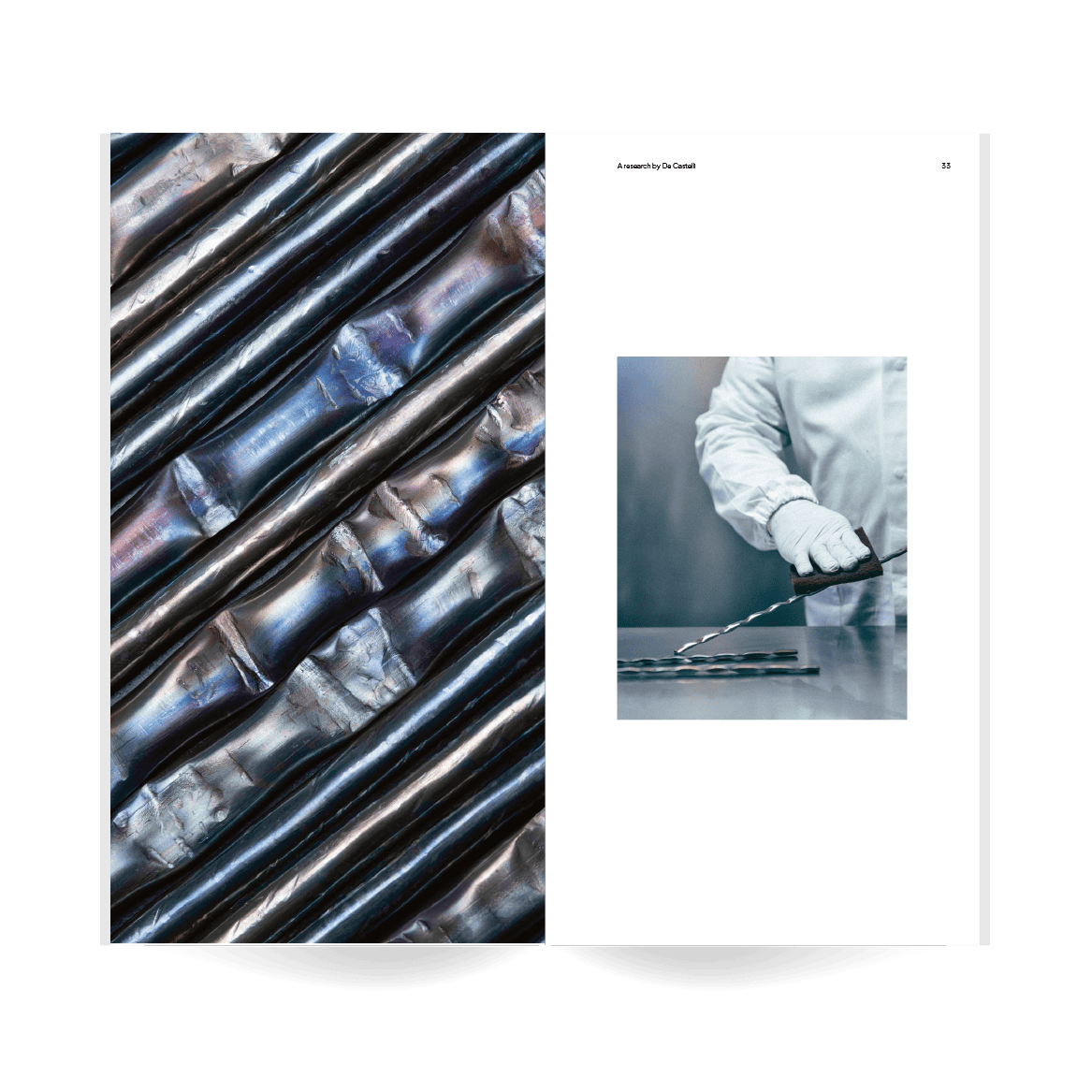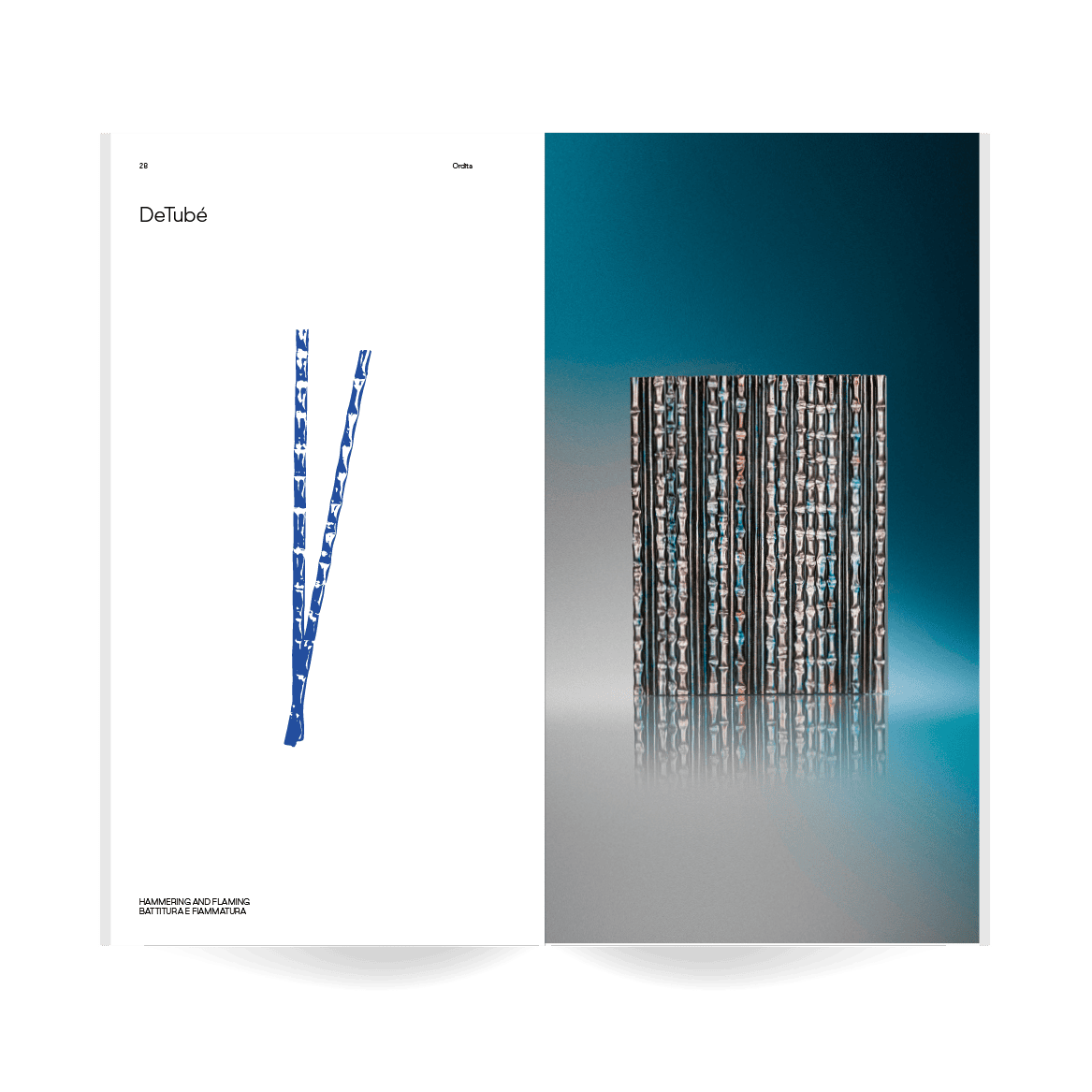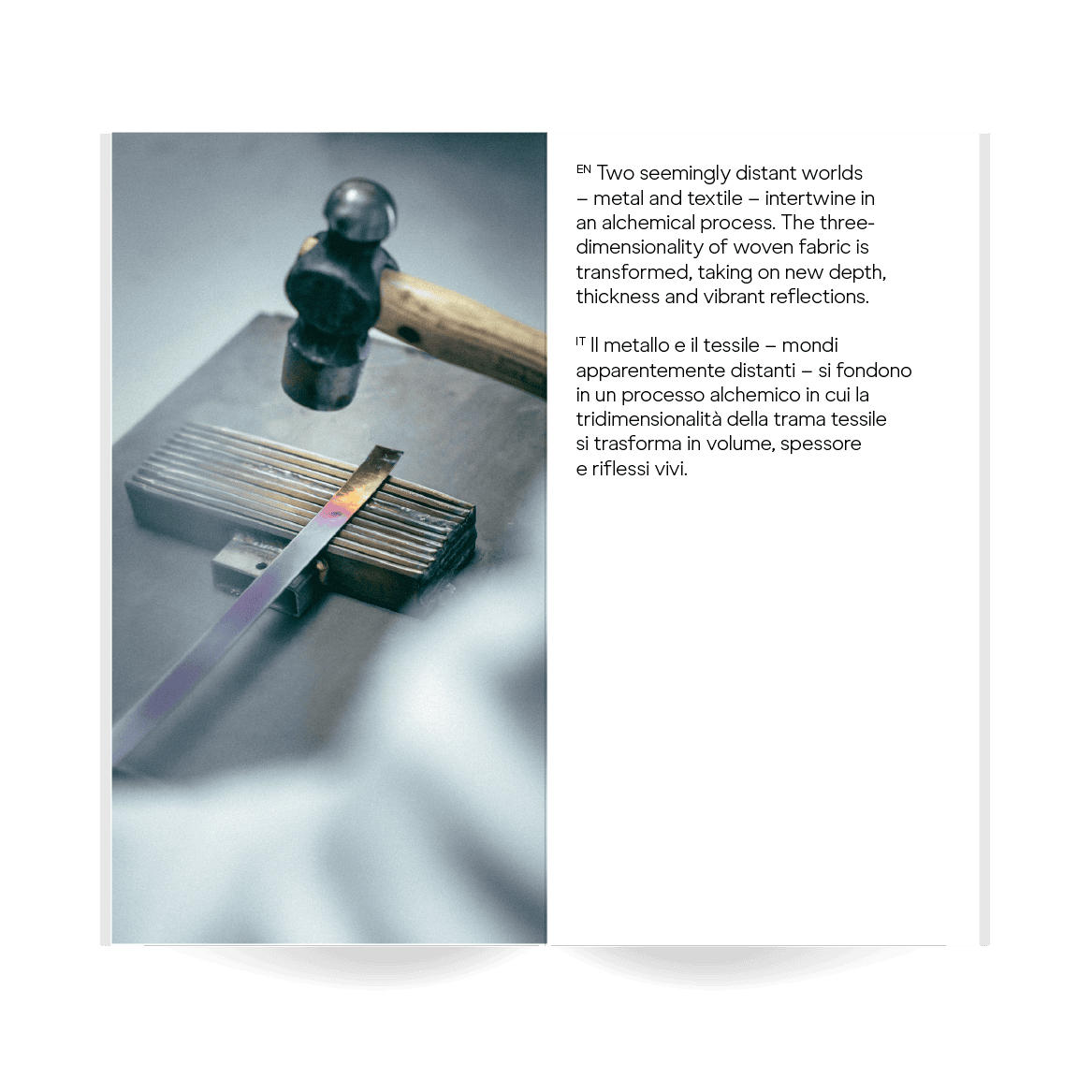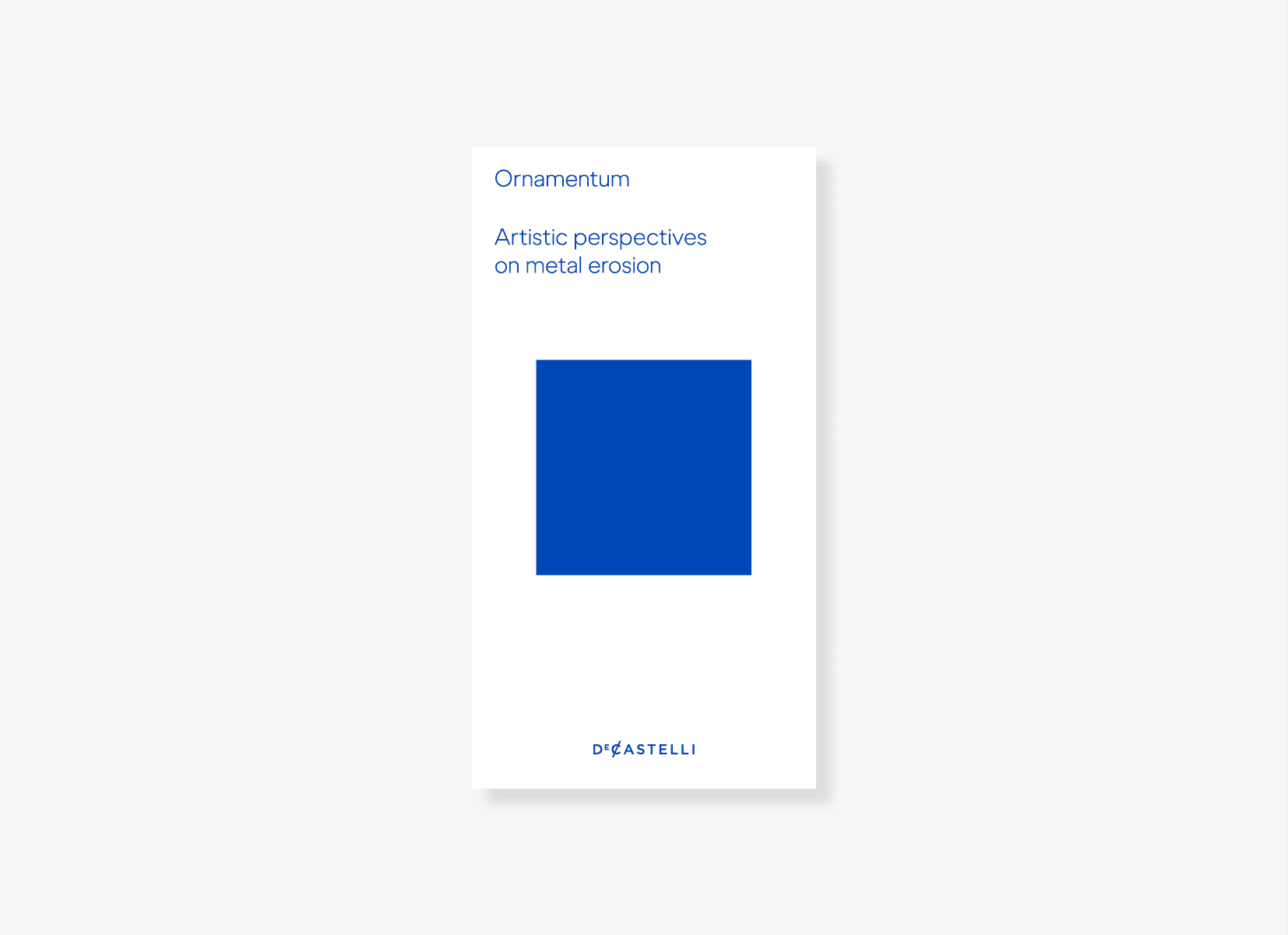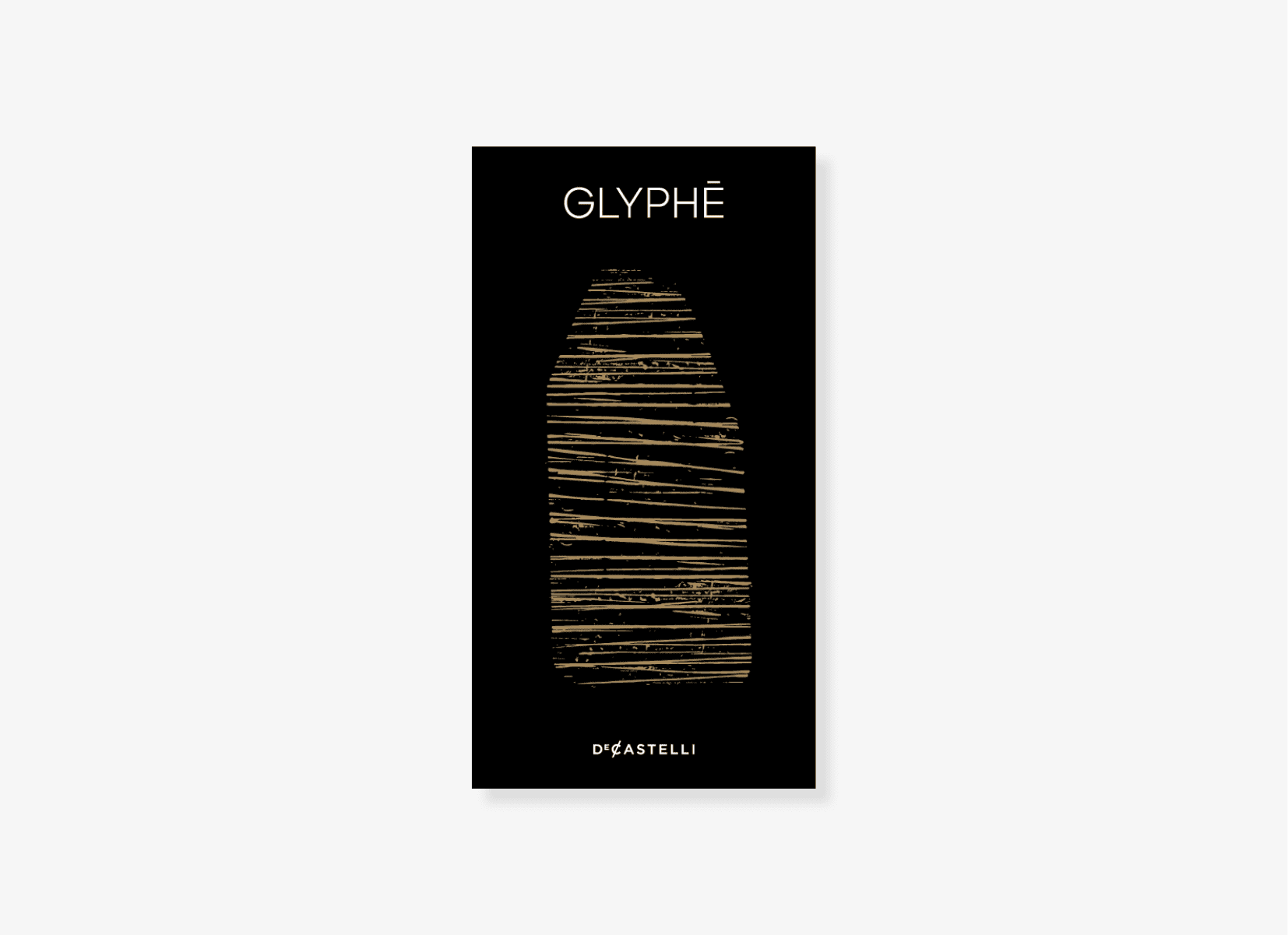Weaving metal and textile into a new narrative






Every material holds a secret, a hidden intuition just waiting to be told. In the collaboration between De Castelli and Evelina Antuono, two seemingly distant worlds – metal and textile – intertwine in an alchemical process. The three-dimensionality of woven fabric is transformed, taking on new depth, thickness and vibrant reflections. For Milan Design Week 2025, De Castelli unveils six new surfaces that reinterpret the art of weaving through the expressive power of metal, opening a new chapter in the ever-evolving story of materials and their metamorphosis.
In this context, the encounter between Albino Celato, CEO of De Castelli, and textile designer Evelina Antuono becomes a refined fusion of time-honoured craftsmanship and innovative vision. Together they transform a tactile experience born in the world of textiles into metal surfaces that speak an entirely new language.

The production process brings together diverse geographies, skills and sensibilities, all refined through the precision of the most advanced technologies and the meticulous expertise of De Castelli’s master artisans. At every stage, from the choice of raw materials to chemical, mechanical and manual treatments, De Castelli allows the material to express its true essence, respecting its character and identity.
In this project, the warp represents the solid backbone that supports every innovation, while the weft – the intertwining of details and patterns, typical of weaving – evolves and expands, giving life to brand new surfaces. It is precisely this bold and daring fusion that proves how the transition from the lightness of fabric to the solidity of metal can defy every convention.


The result of this research is a collection of metal surfaces that goes far beyond the concept of a mere finish. Instead, they form an expressive language in which the material itself becomes a conduit for emotion and meaning. Through the use of oxidising processes, combined with hammering and satin-finishing techniques,
the surfaces acquire striking visual and tactile qualities, transforming metal into a canvas on which stories of transition and metamorphosis are painted. Ripples, geometric patterns, layered elements and sequences of industrial motifs: when treated this way, metal ceases to be just a structure or a covering but becomes the protagonist of an ongoing dialogue between form, light and space, where each surface tells a story of transformation and innovation.












